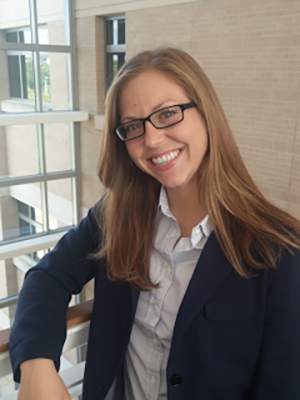 While growing up in New Orleans and later earning her undergraduate degree at Rhodes College in Memphis, Krannert economics professor Jillian Carr heard much more than jazz and blues. With both metropolises perennially listed among the top “murder capitals” in the U.S., the sound of gunfire became as familiar as the music that made the cities famous.
While growing up in New Orleans and later earning her undergraduate degree at Rhodes College in Memphis, Krannert economics professor Jillian Carr heard much more than jazz and blues. With both metropolises perennially listed among the top “murder capitals” in the U.S., the sound of gunfire became as familiar as the music that made the cities famous.
Today, particularly amid the continued escalation of gun violence nationwide, Carr’s ongoing research on the topic also is being heard. Armed with empirical evidence from “ShotSpotter” – an audio surveillance company that tracks and records gunfire incidents for police departments across the country – Carr and coauthor Jennifer Doleac, a professor at the University of Virginia, are gaining media attention as well as the ear of policymakers and the legal community.
In winter 2016, Carr and Doleac began circulating a working paper titled “Keep the Kids Inside? Juvenile Curfews and Urban Gun Violence.” It has since been accepted for publication in Review of Economics and Statistics.
Their findings, based on data collected in Washington, D.C., were startling and controversial. Although traditional crime-reporting measurements such as 911 calls suggest that juvenile curfews are effective deterrents against gun violence, the more accurate data from ShotSpotter showed that gunfire incidents actually increased as a result of juvenile curfews.
“The goal of juvenile curfews is to reduce crime by keeping potential offenders and victims off the streets during the hours when gun violence is most prevalent,” Carr explains. “That same policy also removes bystanders and potential witnesses, however, so their net effect on public safety is unclear.”
Carr and Doleac extended their research with a working paper that was presented at the fall conference of the Association for Public Policy Analysis and Management as a part of a “Big Data in Public Policy Workshop.” Their study, titled “The geography, incidence, and underreporting of gun violence,” compared traditionally reported gunfire incidents in Washington, DC, and Oakland, California, with new data collected through ShotSpotter.
Again, Carr and Doleac found significant evidence of “selective underreporting” of gunfire incidents, although with wide variations influenced not only by geography, but also the enforcement of juvenile curfews, a community’s historical relationship with police, various cultural factors and even the weather.
Sadly, their research initiatives become more timely and crucial with each day's headlines. And an important conclusion is that additional research and better data is needed to address one of society’s most significant problems.
“In this era of ‘big data,’ it’s both surprising and fascinating that we were the first researchers to use any type of surveillance data,” Carr says. “Whether surveillance data is something you like or not, it’s very helpful to researchers and policymakers because it’s empirical and doesn’t rely on human reporting. As the technology improves, using such data will help us better understand crime patterns, more accurately estimate the effects of policy and ultimately save lives.”

